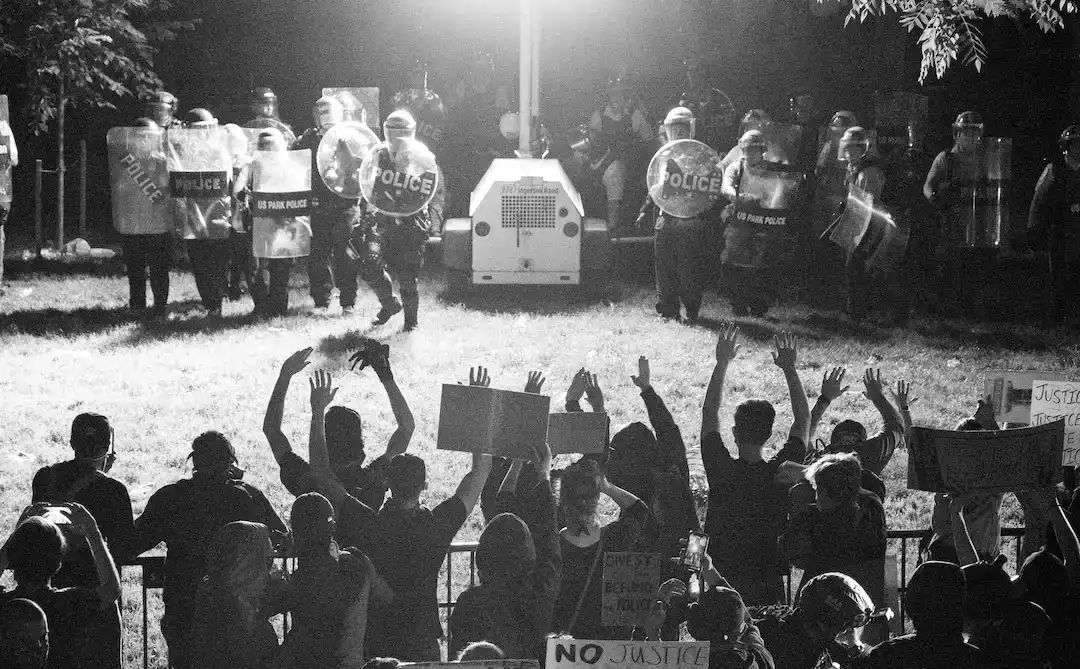How body cameras help with accountability during protests
May 04, 2023

Body cameras have become a prevalent tool used by law enforcement agencies around the world. These small cameras, typically worn by police officers on their uniforms, can capture audio and video recordings of interactions between law enforcement officers and the public. In my personal role as a police officer of over ten years in southern New Jersey, I’ve long known that body cameras are often used in routine policing activities, such as motor vehicle stops and arrests. However, I’ve seen over the last 10 years, as such events have become more and more prevalent across the United States, that they can also play a significant role in documenting and monitoring protests.
Protests, whether they are peaceful demonstrations or civil unrest, and regardless of their motive, have become a common occurrence in many parts of the world. Protests can be organized for various reasons, including social justice issues, political dissent, and demands for change. However, protests can sometimes escalate into tense situations with clashes between protesters and law enforcement officers. In such situations, body cameras can provide crucial documentation that can be used for transparency, accountability, and impartial review.
In a world where the vast majority of private citizens have access to livestream and record events with their cell phones, it is important for law enforcement to also be able to do the same. Years ago, in one of my training exercises at a local college as part of the local Emergency Response Team, we were preparing for possible demonstrations at that location. As part of that preparation, it was instructed that all officers present would wear and activate their body cameras for the duration of the event. Due to the potential conflicts that can arise during such a protest or demonstration, we learned that it was imperative for law enforcement to have their own access to such footage, even if the public was also recording. The nature of body cameras and their storage systems allows for immediate access and review of the footage by command staff or others so that real time information can be gleaned and disseminated while the protest activity is still ongoing.
One of the most significant benefits of using body cameras during protests is the ability to capture an unbiased and impartial record of events. Body cameras can provide an unfiltered perspective, showing what really transpired during a protest without any potential bias or selective editing. The footage can capture interactions between protesters and law enforcement officers, including arrests, use-of-force incidents, and other critical moments.
The footage recorded by body cameras can be used to hold both protesters and law enforcement officers accountable for their actions. If any unlawful or violent behavior occurs during a protest, body camera footage can be used to identify the individuals involved and determine the appropriate course of action. This can include holding protesters accountable for any acts of violence or vandalism and ensuring that law enforcement officers are adhering to their training and protocols.
In my career, when my agency would respond to some type of mass protest or demonstration, we would ensure that all of the officers had activated body cameras for the duration of the event. The reason for this was that we wanted to be able to hold people accountable, however, it was often in the best interest of all involved if we, as law enforcement, actually followed up on holding those people accountable at a later time, rather than risk increasing hostility or adding to “fuel to the fire.” In other words, we would wait to make arrests at a later time, and a lot of those arrests were based on body camera footage.
Additionally, body cameras can help protect both protesters and law enforcement officers from false claims or allegations. In the heat of the moment during a protest, situations can quickly become chaotic, and different perspectives or interpretations of events may arise. Body camera footage can serve as an objective record of events and provide clarity in case of disputes or conflicting accounts. This can help prevent false claims or allegations against both protesters and law enforcement officers, and ensure that the truth prevails in all senses: criminally, civilly, and in the court of public opinion.
Furthermore, body cameras can also serve as a deterrent for potential misconduct or inappropriate behavior by both protesters and law enforcement officers. Knowing that their actions are being recorded can discourage individuals from engaging in violent or unlawful behavior during a protest, and can also discourage law enforcement officers from using excessive force or engaging in other misconduct. The presence of body cameras can help promote professionalism, accountability, and adherence to the law during protests.
In addition to accountability and transparency, body cameras can also facilitate communication and de-escalation during protests. When law enforcement officers are aware that their actions are being recorded, they may be more inclined to use de-escalation techniques and communicate more effectively with protesters. Similarly, protesters may be more inclined to follow instructions from law enforcement officers if they know that their actions are being documented. This can help prevent tense situations from escalating into violence and promote peaceful interactions between protesters and law enforcement officers.
Moreover, body camera footage can also serve as valuable evidence in legal proceedings. In the event of arrests or use of force incidents during protests, body camera footage can provide critical evidence that can be used in court to determine the legality of the actions taken by both protesters and law enforcement officers.
Using body cameras during protests, demonstrations, or events of civil unrest can help ensure that justice is served and that the appropriate legal actions are taken based on factual evidence. In addition, and sometimes more importantly, the video footage can be released to the media to provide an accurate account of the event.